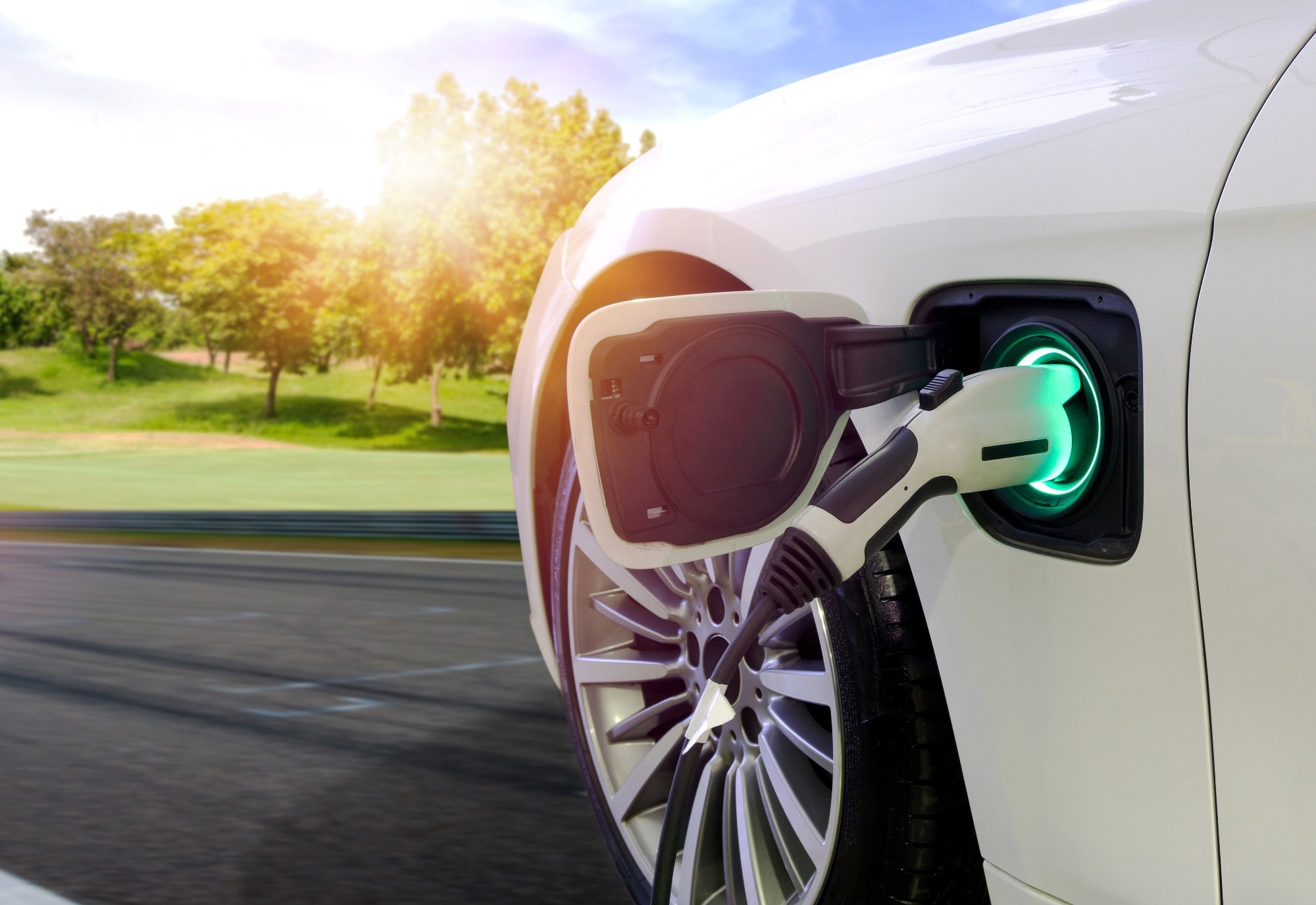In a paper published in the journal Sustainability, researchers introduced a novel approach for coordinating the operation of electric vehicles (EV) within multimicrogrids. This method aimed to optimize harnessing renewable energy sources (RES) to meet load demands. The microgrid system includes various components such as renewable energy sources, energy storage systems, non-renewable sources, EVs, and loads. Moreover, the control hierarchy spanned from microsource controllers to unit controllers, microgrid controllers, and a top-level multimicrogrid controller. The proposed approach was validated through simulation-based case studies, confirming its effectiveness in optimizing EV operation in complex microgrid setups.
 Study: Optimizing Electric Vehicle Operation in Multimicrogrids through Coordinated Control. Image credit: Smile Fight/Shutterstock
Study: Optimizing Electric Vehicle Operation in Multimicrogrids through Coordinated Control. Image credit: Smile Fight/Shutterstock
Background
EVs are gaining increasing attention as an environmentally friendly alternative to conventional fossil fuel vehicles. Their advantages, such as lower pollution and operational costs, depend on effective charging strategies. Proper charging is crucial; for instance, an EV charged from a coal power plant could generate more pollution than a traditional fossil-fuel vehicle. Additionally, EVs with substantial parking hours can serve as mobile energy storage, potentially supporting the grid. RES has garnered interest in addressing environmental concerns. Microgrids (MG) have proven effective for integrating RES. MG consists of distributed energy sources (DES) and storage, managed to supply designated loads with or without the main grid.
Related work
Past research has proposed various strategies for managing EVs within MG. Optimization algorithms have been explored, including a double-loop cooperative control approach for RESs and EV in a multimicrogrid (MMG) context, optimal control for MG with various energy sources, and minimizing operational costs through modified algorithms. Intelligent methods have been applied, optimizing MG via simulation-based algorithms and addressing load frequency response with specialized controllers.
Strategies for resilience improvement involve using EV to support faulty MG and enhancing network resilience. EV integration techniques within MG encompass decentralized predictive control, fuzzy logic control, and distributed algorithms. Optimization models have targeted objectives such as cost minimization, increased renewable integration, power flow optimization, battery state of charge estimation, battery degradation prediction, and addressing cost-voltage fluctuation trade-offs.
Proposed method
The new system comprises interconnected MG with RES, ESS, EV, NRES, and loads. Microsource controllers manage components grouped into unit controllers, overseen by MG controllers. A single multimicrogrid controller (MMGC) coordinates resource sharing securely. This versatile approach optimizes resource utilization and exchange. MMGC, MGC, and EV unit controllers ensure hierarchical coordination for EV operation within MG. In grid-tied mode, the Microgrid Controller (MGC) coordinates resources to meet demand, utilizing RES, Energy Storage Unit (ESU), and Non-Renewable Energy Sources (NRES) for power and reactive support. The Electric Vehicle Controller (EVC) manages EV charging based on parameters, collaborating with MGC and MMGC for feasibility optimizing State of Charge (SoC) targets through an optimization problem.
Experimental results
A case study involving five MG was conducted to validate the behavior of MG controllers. Each MG consisted of solar panels RES, battery energy storage systems (BESS) as ESU, EV, and diesel generators NRES. Different power factor modes (unity, leading, lagging) were tested to verify MG controller behavior.
MG 1: MG 1 had a balanced mix of resources. Solar panels supplied power in grid-connected mode and provided to other MG if needed. ESU participated in MMG interactions. NRES remained idle in grid-connected mode and operated in islanded mode when necessary. EV followed different charging modes based on their requirements. The load was always supplied in grid-connected mode, and shedding occurred in islanded mode when necessary.
MG 2: MG 2 was self-sufficient and had minimal MMG interaction. Resources participated in MMG operation in partial islanding. Active and reactive powers were considered due to lagging power factors. RES was utilized in grid-tied mode, and ESU was charged accordingly. NRES were operated in islanded mode when required. The load was supplied in grid-connected mode, and shedding happened in islanded mode when resources were insufficient.
MG 3: MG 3 operated at a leading power factor. RES supplied power in grid-tied mode, and ESU absorbed reactive power. NRES were idle in grid-tied mode and operated in islanded mode if needed. The load was supplied in grid-connected mode with no shedding.
MG 4: Similar to MG 1 but with a higher load demand. They requested MMG support during certain hours. RES, ESU, and NRES operated similarly to MG 1. EVs followed different charging modes based on their needs. The load shedding occurred when MG resources were insufficient.
MG 5: Similar to MG 1 but with higher RES. Resources were abundant, with no load shedding. ESU discharged during islanding if needed. NRES remained idle in grid-tied mode and operated during islanding if required. EV operated according to their demands without shedding.
Conclusion
To summarize, this paper presents a four-level control approach for coordinating EVs within multimicrogrids. The proposed scheme maximizes renewable energy utilization while ensuring load requirements are met. The system includes microsource and unit controllers for different energy sources, storage, EV, and loads, managed by an MMG controller. EVs operate in distinct modes validated through simulations. Future work could expand to include EVs providing reactive power support and refining MMG control for scenarios involving both grid-connected and islanded microgrids.